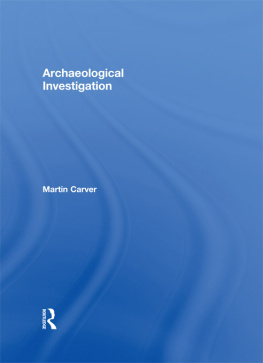The International Library of Sociology
PACIFISM
Founded by KARL MANNHEIM
The International Library of Sociology
POLITICAL SOCIOLOGY
In 18 Volumes
| I | The American Science of Politics | Crick |
| II | The Analysis of Political Behaviour | Lasswell |
| III | The Analysis of Political Systems | Verney |
| IV | Central European Democracy and its Background | Schlesinger |
| V | The Decline of Liberalism as an Ideology | Hallowell |
| VI | Democracy and Dictatorship | Barbu |
| VII | Dictatorship and Political Police | Bramstedt |
| VIII | Federalism in Central and Eastern Europe | Schlesinger |
| IX | History of Socialism | Laidler |
| X | How People Vote | Benney et al |
| XI | The Logic of Liberty | Polanyi |
| XII | Pacifism | Martin |
| XIII | Patterns of Peacemaking | Thomson et al |
| XIV | Plan for Reconstruction | Hutt |
| XV | Politics of Influence | Wootton |
| XVI | Politics of Mass Society | Kornhauser |
| XVII | Power and Society | Lasswell et al |
| XVIII | Process of Independence | Mansur |
PACIFISM
by
DAVID A. MARTIN
First published in 1965
by Routledge
Reprinted in 1998, 1999, 2000
by Routledge
2 Park Square, Milton Park, Abingdon, Oxon, OX14 4RN
Transferred to Digital Printing 2007
1965 David A. Martin
Routledge is an imprint of the Taylor & Francis Group
All rights reserved. No part of this book may be reprinted or reproduced or utilized in any form or by any electronic, mechanical, or other means, now known or hereafter invented, including photocopying and recording, or in any information storage or retrieval system, without permission in writing from the publishers.
The publishers have made every effort to contact authors/copyright holders of the works reprinted in The International Library of Sociology. This has not been possible in every case, however, and we would welcome correspondence from those individuals/companies we have been unable to trace.
British Library Cataloguing in Publication Data
A CIP catalogue record for this book is available from the British Library
Pacifism
ISBN 0-415-17550-X
Political Sociology: 18 Volumes
ISBN 0-415-17820-7
The International Library of Sociology: 274 Volumes
ISBN 0-415-17838-X
Publisher's Note
The publisher has gone to great lengths to ensure the quality of this reprint but points out that some imperfections in the original may be apparent
CONTENTS
SECT, ORDER AND CULT
PREFACE
IN a synthetic study such as this, one inevitably accumulates a large number of debts, only some of which can be acknowledged here. I owe a particular debt to Professor Donald MacRae, whose stimulation and confidence ensured that four years of painful gestation did not end in still-birth. I am also very grateful to Professor Ernest Gellner who cast a characteristically astringent eye over the new-born child.
I have had the benefit of correspondence and conversations with various people who should be named: Professor John MacMurray, Dr. A. R. Vidler, Dr. Geoffrey Nuttall, Dr. Keith Robbins, Mr. John Jackson, Dr. Bryan Wilson, Dr. Axel von Campenhausen and Dr. John Highet. I should like to mention the Manager of Pickering and Inglis, the Imam of Woking,and the custodians of the Friends Library, Euston Road, who extended a traditional Quaker kindness to me. Naturally none of the above is responsible for the rashness of my generalizations or the vigour of my prejudices: indeed they would specifically dissociate themselves from many of them.
I should also like to thank those who made my research possible without overmuch financial strain. The generosity of the Convocation Trust Fund under the custody of Dr. Dunsheath made it possible for me to take up the University Studentship in sociology in 1959. Miss Hunter and the External Registrar were likewise instrumental in this connection. I should say that this study was accepted for the Ph.D. degree in the University of London.
Very sincere thanks are due in various ways to Mrs. MacLeod and Mrs. Joan Mallison.
Some more particular obligations require acknowledgement. My obligations to Dr. W. A. Cole of Bristol University and to Dr. H. Barbour of Earlham College, Richmond, Indiana, are referred to in the text, but I am grateful to them for permission to use their material. The chapter on the Labour Party is heavily indebted to the work of Dr. S. Davis, while the section on the I.L.P. leans on research by A. J. B. Marwick of Edinburgh University. I have diffuse obligations to A. J. P. Taylor's Dissent over Foreign Policy, Herbert Butterfield's Christianity and History, F. A. Lea's Life of Middleton Murry and Julian Symons's The Thirties. Bryan Wilson's thesisnow Sects and Societygave me considerable stimulation and I only regret that his distinguished work in the field of classification was not known to me until a late stage in my own formulations. The influence of Reinhold Niebuhr and Karl Mannheim pervades the whole of my argument.
I also owe something to the Non-Combatant Corps of which I was a member 19481950, to the Royal Pioneer Corps and to the Military Policewith which non-combatants are paradoxically associated. In the case of the Military Police they succeeded in converting my adolescent contempt for the psychology and institutions of militarism into a conviction never likely to leave me. I am entirely convinced that war and militarism are utterly repugnant to reason and religion. This book examines critically the mythologies of peace not in order to restore the mythologies of nationalism or any other form of reaction but in order to root peace in realism.
Lastly, I am indebted to my parents and my wife in innumerable ways and I would like to take this opportunity of expressing my gratitude.
INTRODUCTION
THIS book is divided into two parts. The first part is concerned with expounding a broad framework and with illustrating it from a wide variety of historical examples. The second part narrows the focus to modern Britain, largely in the nineteenth and twentieth centuries, and has particular reference to the years covered by the world wars, 19141945. The aim of the second part is to exemplify the framework in detail within the specific context of British history. However, it would have been quite as feasible to select American history for this purpose.
The first and last chapters stand somewhat apart in their degree of concentration and they could present the reader with a certain amount of difficulty. As regards the last chapter it is largely a summary of conclusions and is comprehensible providing the previous argument has been understood. However, perhaps a little more needs to be said about the organization and purpose of the first chapter.









